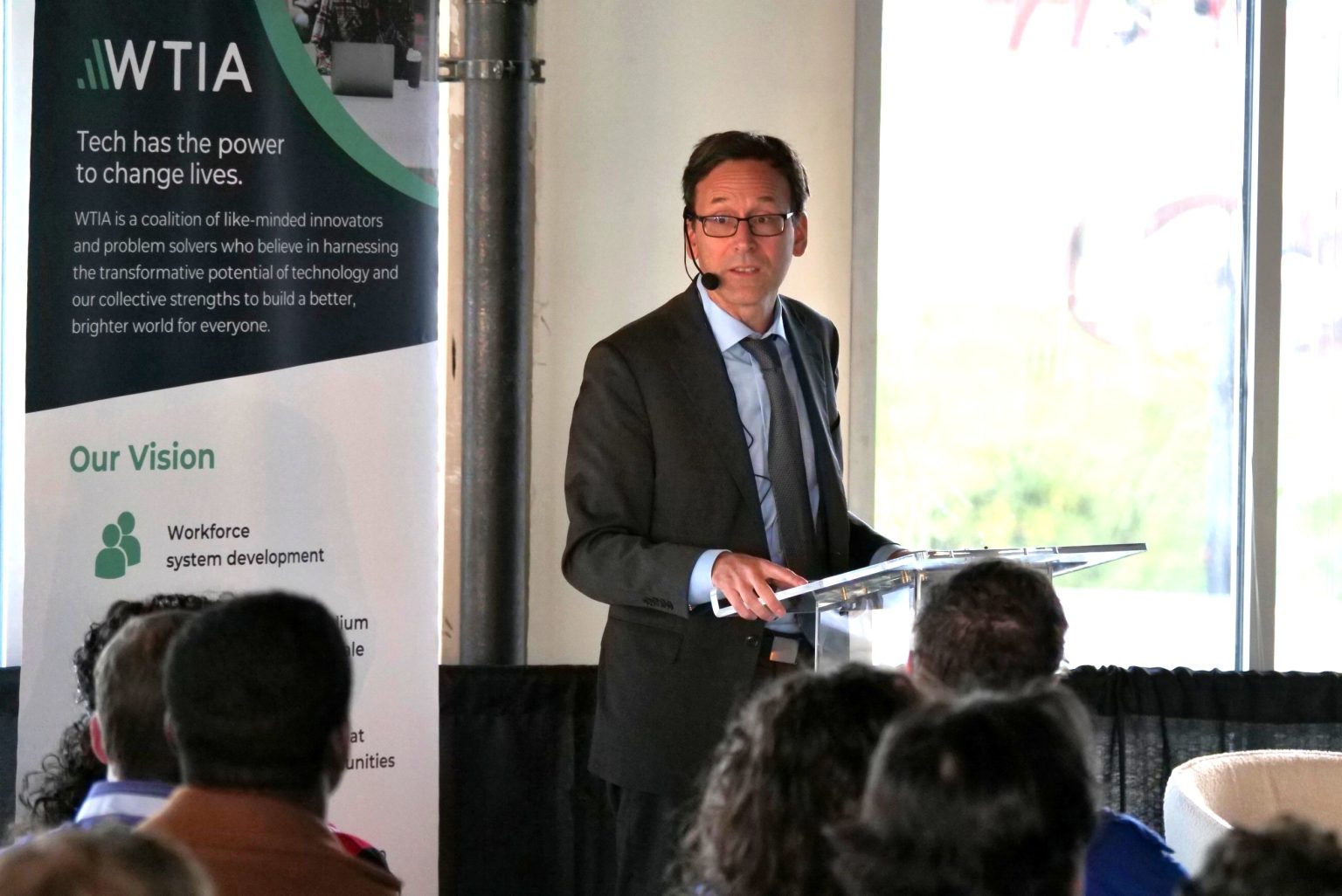Governor Ferguson Navigates AI’s Promise and Perils in Washington State
In an era where artificial intelligence is reshaping society at breathtaking speed, Washington State Governor Bob Ferguson is taking a measured approach to what he considers one of his administration’s “top five biggest challenges.” Speaking at the opening reception of Seattle AI Week at AI House on Pier 70, Ferguson articulated his governing philosophy on AI with clarity: “I view my job as maximizing the benefits and minimizing harms.” This pragmatic stance comes at a critical moment for Washington state, as its largest employer, Amazon, announced the elimination of approximately 14,000 corporate jobs, citing the need for greater efficiency in the AI era. The juxtaposition of Ferguson’s appearance and Amazon’s announcement underscores the complex reality facing government leaders as they navigate technological transformation – balancing innovation’s potential against its disruptive effects on employment and society.
Ferguson’s concerns about AI extend beyond economic impacts to deeply personal dimensions. As a father of 17-year-old twins, he expressed worries about AI’s influence on young people, specifically referencing reports of teen suicides linked to AI chatbots. “The future of work and loss of jobs that come with the technology” weighs heavily on his mind, reflecting the dual nature of his responsibility as both a public official and a parent. Despite these serious concerns, Ferguson maintained an optimistic tone about Washington’s position in the AI landscape, emphasizing that “there is no better place anywhere in the United States for this innovation than right here in the Northwest.” This confidence in the region’s potential was backed by action – even amid a significant $16 billion state budget shortfall, Ferguson’s administration preserved $300,000 in funding for AI House, demonstrating a commitment to fostering the local AI ecosystem.
Washington state’s approach to AI governance stands out for its methodical nature in a rapidly evolving regulatory landscape. The state’s AI Task Force, established during Ferguson’s tenure as attorney general, continues to study critical issues ranging from algorithmic bias to data security. With its next set of recommendations expected later this year, the task force may significantly influence upcoming legislation. This deliberate process positions Washington in what could be described as the pragmatic middle ground of state-level AI regulation – neither rushing to impose restrictive rules nor taking a hands-off approach. Instead, Ferguson is employing executive action and expert guidance to develop thoughtful guidelines while observing regulatory experiments in states like California and Colorado. This balanced strategy acknowledges both AI’s transformative potential across sectors like healthcare, education, and wildfire detection, as well as its possible pitfalls.
The governor’s approach reflects a broader pattern emerging in AI governance, where states are moving forward with their own frameworks in the absence of comprehensive federal regulation. Seattle’s municipal government has joined this effort, with Mayor Bruce Harrell recently announcing a “responsible AI plan” that provides guidelines for the city’s use of AI while supporting the tech sector’s economic development. This multi-tiered approach to governance – with action at state, city, and industry levels – creates a regulatory ecosystem that aims to be responsive to both technological capabilities and social concerns. Ferguson’s comment that AI “could totally transform our government, as well as the private sector, in many ways” recognizes the dual nature of the challenge: the state must both regulate AI and adapt to using it effectively in its own operations.
The timing of Ferguson’s appearance at Seattle AI Week is particularly significant as the region experiences what some might call “a tale of two Seattles” in the AI era. On one hand, established tech companies are implementing significant layoffs while citing AI as a factor in restructuring. On the other hand, new AI startups are emerging, bringing fresh energy and opportunity to the tech community. This dichotomy perfectly illustrates the challenge facing policymakers like Ferguson – how to manage the transition in a way that minimizes economic disruption while positioning the state to capture the benefits of technological advancement. The governor’s emphasis on Washington’s technical talent and the economic opportunities presented by AI suggests a forward-looking perspective, even as his administration works to address immediate concerns about job displacement and ethical implications.
Washington’s emerging approach to AI governance under Ferguson’s leadership may offer a model for other states seeking to balance innovation with responsibility. By establishing expert-led processes for developing guidelines while remaining attentive to concrete impacts on citizens, the state is attempting to create a framework that can evolve alongside the technology itself. The preservation of funding for initiatives like AI House, even in a challenging budget environment, indicates a strategic commitment to positioning Washington at the forefront of responsible AI development. As Ferguson continues to navigate what he calls one of his administration’s greatest challenges, his dual focus on both the transformative potential of AI and its human impacts reflects the complex reality facing all policymakers in the artificial intelligence age – the need to harness unprecedented technological power while ensuring it serves rather than harms the public good. This balanced approach may prove crucial as Washington state and its tech ecosystem continue to play a significant role in shaping how AI is developed and deployed across America.


